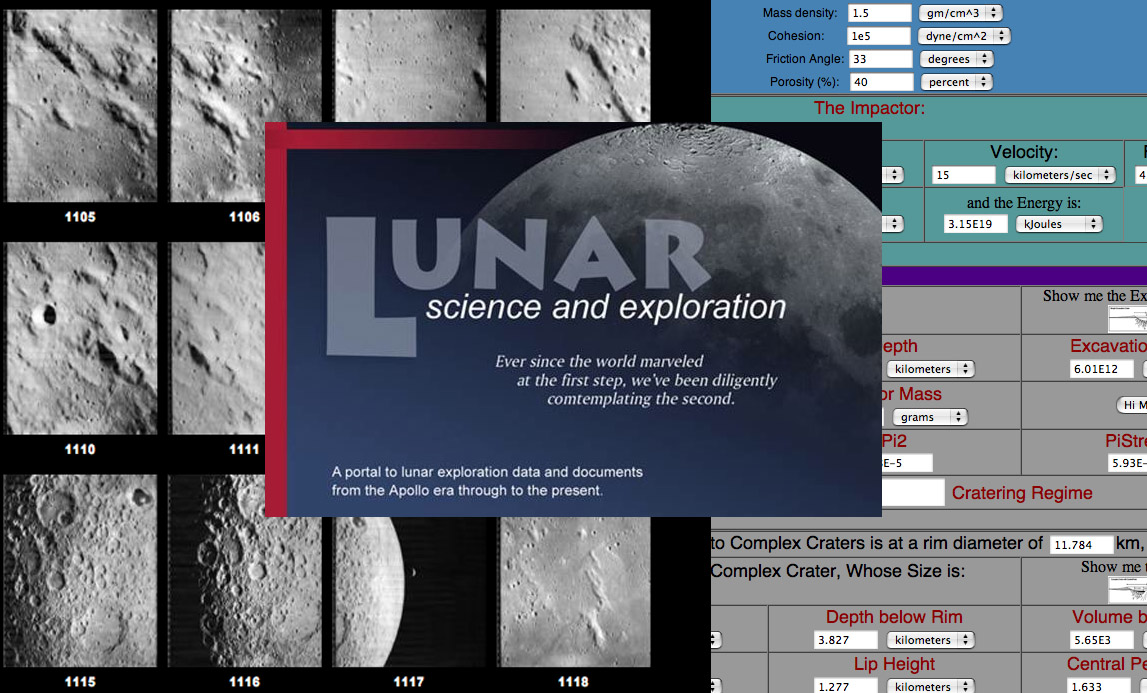
image pieces from Lunar & Planetary Institute’s The Moon; composited by CAW
A marvelous new resource was announced October 1. The Lunar & Planetary Institute in Houston has released a major addition to their website. Lunar Science and Exploration is a deep collection of digitized material including thousands of new images, reports and plans for nearly all NASA (and some Soviet) lunar missions, data on lunar samples and meteorites, educational activities and the beginning of a collection of online simulations. The right half of today’s LPOD shows part of the interface for an impact crater calculator, and the left side is thumbnails of Lunar Orbiter I images. The Lunar Orbiter Photo Gallery will perhaps be the part of greatest interest to LPOD visitors, for it includes an apparently complete collection of photos take by Orbiters I through V. These new images are from the USGS and LPI, and are high resolution scans from film or photographic products, unlike LPI’s earlier Digital Lunar Orbiter Photographic Atlas of the Moon collection which was scanned from a printed atlas. I look forward to the day when there is a similar repository for SMART-1 data, and then more from SELENE and all the coming missions to the Moon.
Yesterday's LPOD: Crateric Concatenation
Tomorrow's LPOD: The Face of the Universe
COMMENTS?
Register, Log in, and join in the comments.



